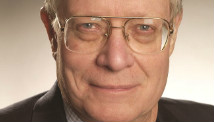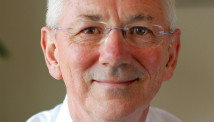SEATTLE/TOKYO (Reuters) - In 2007, U.S. regulators cleared Boeing's use of a highly flammable battery in the 787 Dreamliner, deciding it was safe to let the lithium-ion battery burn out if it caught fire mid-air as long as the flames were contained, and smoke and fumes vented properly, according to documents reviewed by Reuters.
Fire risk on planes has always been a major concern, especially given the amount of fuel they carry and the heat generated by jet engines. U.S. aviation standards require planes to have numerous on-board fire suppression systems.
But through a review of government documents and interviews with aviation and battery experts, Reuters found that the U.S. Federal Aviation Administration granted the Dreamliner special conditions and said its contain-and-vent system was sufficient to control the build-up of explosive or toxic gases, except in situations considered "extremely remote."
The FAA's 2007 decision is now coming under scrutiny after the lithium-ion batteries in two 787 planes failed within days of each other, sparking a fire in one case in Boston, and generating warnings and an acrid smell that prompted the pilots of the second plane to make an emergency landing in Japan.
A key U.S. Senate committee plans to hold a hearing in the coming weeks to examine aviation safety oversight and the FAA's certification of the 787, an aide to the Senate Commerce, Science and Transportation Committee told Reuters on Tuesday.
The FAA has grounded the Dreamliner in the U.S. pending an investigation, and other aviation regulators around the world immediately followed, stopping use of all 50 planes in service, each of which can carry about 250 passengers.
The National Transportation Safety Board is conducting the U.S. probe, with help from Boeing, the battery maker, GS Yuasa Corp of Japan, and the FAA.
The review has broad implications for other aircraft makers, including EADS unit Airbus, which also had to meet special conditions set by the FAA to use lithium-ion batteries on the A380 - a superjumbo jet that carries about 550 passengers.
A spokesperson for the FAA defended the 2007 approval, saying, "the whole aviation system is designed so that if a worst case happens, there are systems in place to prevent that from interfering with other systems on the plane."
Boeing said the 787's battery system has four layers of protection to prevent the battery from overcharging, making a fire extremely unlikely. The company said it was confident the battery could safely burn out in air because of a robust system for containing a fire and venting smoke and fumes.
The batteries were chosen "after a careful review of available alternatives because they best met the performance and design objectives of the 787," Boeing spokesman Marc Birtel said. "Based on everything we know at this point, we have not changed our evaluation."
The cause of the two 787 battery failures is not yet known and investigators are still determining how the contain-and-vent systems performed. But the incidents have revived a decades-old debate on the safety of lithium-ion batteries and raised questions over whether the FAA should have consented to their use in the 787.
Congressman Rick Larsen, who was named ranking member of the House Aviation Subcommittee on Tuesday, said it was appropriate for the FAA to impose special conditions for the 787, the world's first carbon composite aircraft, but a review of the approval "may be something we could look at in light of the current problems."
The FAA spokesperson said the agency may add new requirements for the batteries upon completion of the NTSB probe, but declined to elaborate.
Depending on the outcome of the review, Boeing could face steep costs, ranging from compensating airlines for lost use of planes to a possible major redesign and re-certification of the battery or electrical system, industry experts say.
WIDELY USED TECHNOLOGY
Lithium-ion batteries are lightweight, recharge quickly and can hold more power than conventional cells. But they have a history of safety concerns, leading some battery experts to question their use in any consumer product.
In the FAA's 2007 review, it said lithium-ion batteries were "significantly more susceptible" to fires than other types and added that those fires are tough to put out.
"Metallic lithium can ignite, resulting in a self-sustaining fire or explosion," the FAA said in granting approval.
FAA rules do not cover lithium batteries, so the agency in 2007 set nine "special conditions" Boeing had to meet to ensure their safety. A year earlier, the FAA had set similar conditions for Airbus. Special conditions are commonly used to cover new technology for which rules have not yet been written.
In both cases, the Air Line Pilots Association International, the world's largest pilot union, said airplane fire is so dangerous that the FAA should require cabin crew to have fire extinguishers and training to put out a lithium-ion battery fire. "A fire from these devices, in any situation, is unacceptable," the union said, during the 787 approval process.
The FAA said it chose not to require special fire extinguishers and training because of the four redundant systems already in the Boeing system to prevent the battery from catching fire.
The ALPA said on Tuesday it is monitoring the investigation into the 787 battery incidents, but declined to comment while the probe is going on.
"It goes back to why this was approved in the first place," said Hidetake Sakuma, an aviation safety consultant and a former safety manager at Japan Airlines Co Ltd.
"Of course there were people asking whether this was really safe, but they (the FAA) approved it and the Japanese airlines never questioned it."
Japanese airlines operate nearly half of the 787s in service.
ODD SMELL
Passengers on the Japan flight reported an odor like burning plastic soon after takeoff. All Nippon Airways Co Ltd Vice President Osamu Shinobe said in addition to a battery alert in the cockpit, "there was an odd smell detected in the cockpit and cabin."
The NTSB declined to comment, citing the ongoing probe. The Japan Transportation Safety Board, which is leading that investigation, and the NTSB so far describe it as a "battery incident," not a fire.
A photograph of the battery retrieved from the flight showed a blackened, melted interior with fused wires, a deformed lid and scorched casing.
A GS Yuasa spokesman said the company is cooperating with the investigation, but declined to comment on the details.
Boeing has not commented specifically on the battery failure in this incident. In the case of the Boston plane, Boeing said smoke got into the cabin because the 787 was on the ground without cabin pressure to redirect airflow.
Some experts cautioned against a rush to judgment about lithium-ion battery technology, saying the key was to understand failure rates and design a safe system.
"Everyone knew these dangers, but after it was designed, there were multiple tests and that's why it's in the final plane," said Yoshitomo Aoki, a Japanese aviation commentator. "It wouldn't have been approved if it wasn't safe."
Airbus plans to use lithium-ion batteries in its forthcoming A350 jet, its answer to the 787. That plane will use a different architecture that puts less stress on batteries, while expelling unwanted gases safely, Airbus says.
On Sunday, the NTSB widened its probe to include the Tucson, Arizona-based company that makes the charger for the batteries, Securaplane Technologies, a unit of Britain's Meggitt Plc. Securaplane said it is cooperating with the investigation.
"In no way would a fire like this lead me to say you should never have a lithium-ion battery on an airplane. That's just the wrong way to go," said Daniel Doughty, who helped write testing standards for electrical cars and worked on battery technology during 27 years at Sandia National Laboratory, a federally funded research center owned by Lockheed Martin Corp.
But Doughty and others said the FAA's earlier decisions deserved scrutiny.
"It's fair to ask about the approval process," Doughty said. "There needs to be some explanation and defense of whatever they did."
(Reporting by Alwyn Scott in SEATTLE and Mari Saito in TOKYO; Additional reporting by Tim Kelly, Maki Shiraki and Kentaro Sugiyama in TOKYO, Antoni Slodkowski in TAKAMATSU, Yoshiyuki Osada in OSAKA, Andrea Shalal-Esa in WASHINGTON, Bill Rigby in SEATTLE, Tim Hepher in PARIS, Peter Henderson in SAN FRANCISCO and Bernie Woodall and Deepa Seetharaman in DETROIT; Editing by Edward Tobin, Tiffany Wu and Andre Grenon)


